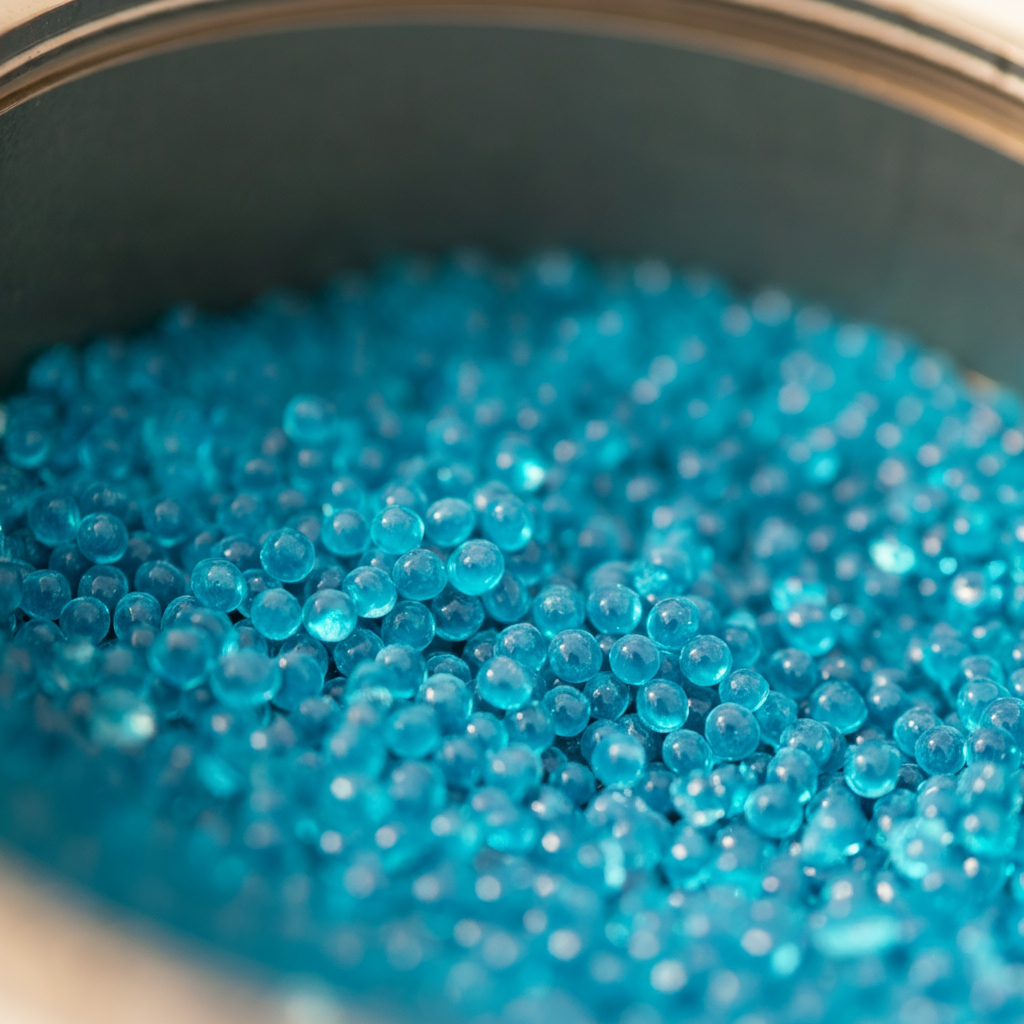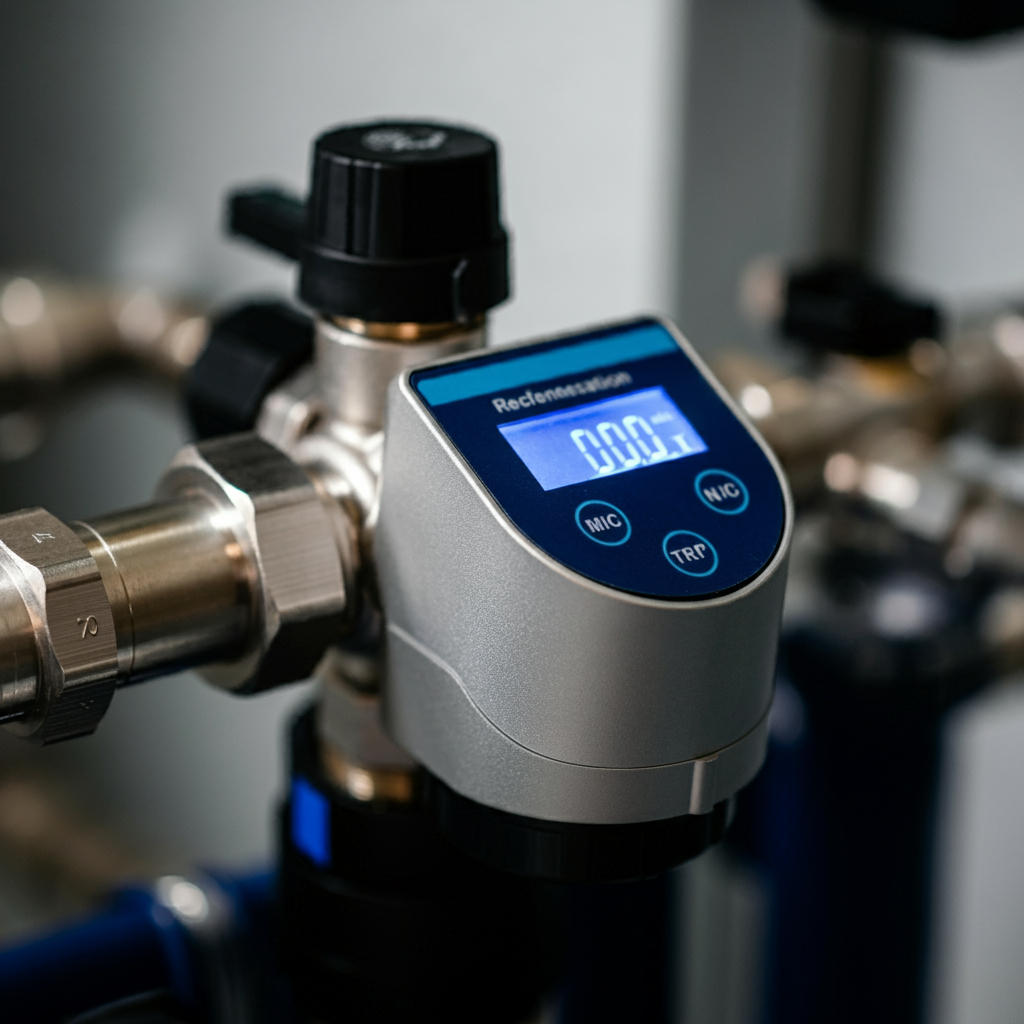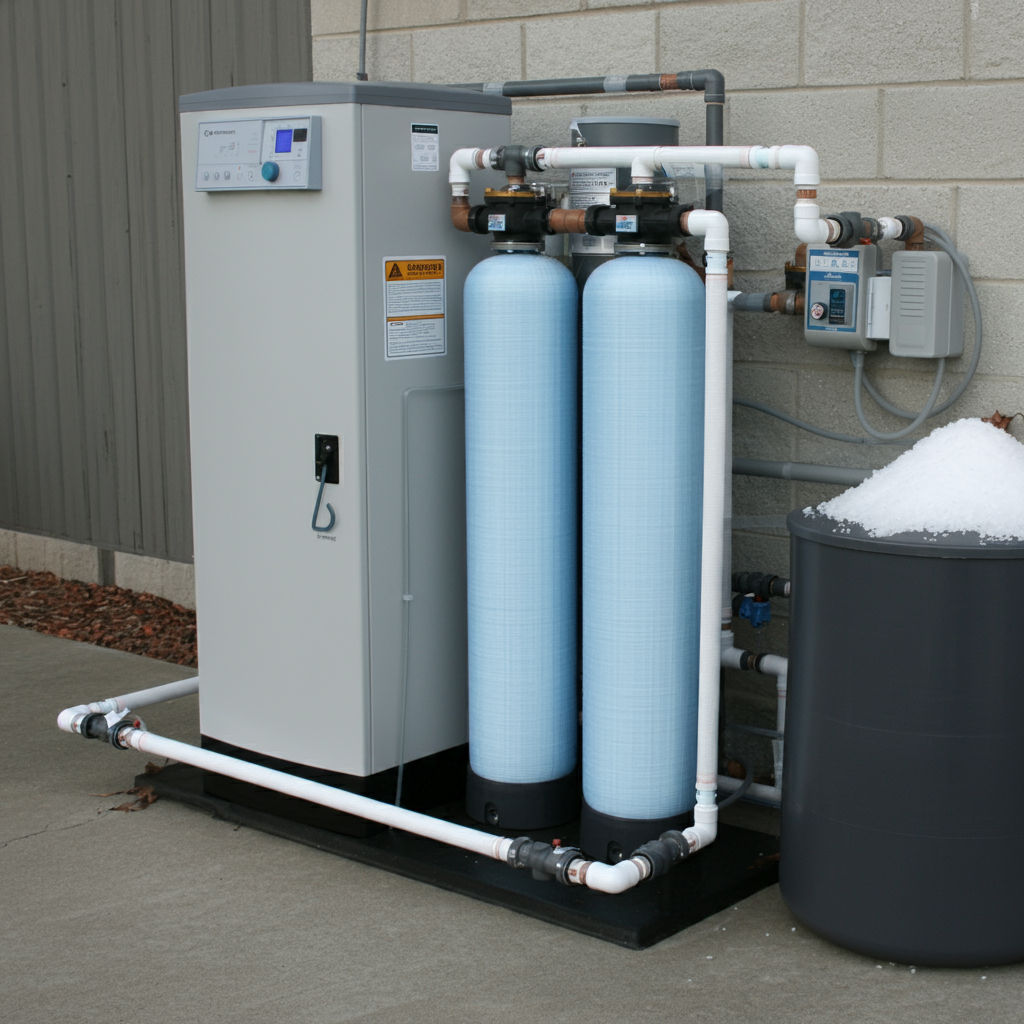How often you should regenerate your water softener isn’t a one-size-fits-all answer. The ideal frequency hinges on two primary factors: the hardness of your water and the size of your water softener. At WaterSoftenerSizing.com, we specialize in helping you find the perfect balance, ensuring your water is soft, your appliances are protected, and your softener operates at peak efficiency. Water hardness, measured in grains per gallon (gpg), indicates the concentration of dissolved minerals like calcium and magnesium. Higher hardness levels require more frequent regeneration to prevent mineral buildup from overwhelming the softener’s resin beads. Softener size, measured in grain capacity, dictates how much hardness the system can remove before needing to reset. Larger softeners can naturally go longer between regenerations. This interplay between hardness and size is crucial. A small softener battling very hard water might need to regenerate every few days, while a large unit in a home with moderately hard water could go a week or more. That’s why a personalized approach, like the one we offer, is essential. Our goal is to empower you with the knowledge to make informed decisions about your water softener. Understanding the factors that influence regeneration frequency is the first step towards enjoying the full benefits of soft water: from luxuriously soft skin and hair to sparkling dishes and longer-lasting appliances. Throughout this guide, we’ll delve into these factors, providing you with clear guidelines, practical tips, and expert advice to ensure your water softener is always working its best.
Understanding Water Hardness and Its Impact
Water hardness, a common concern for homeowners and businesses, is the concentration of dissolved minerals in your water supply. The primary culprits behind hard water are calcium and magnesium, though other minerals like iron can also contribute. Water hardness is typically measured in grains per gallon (gpg) or parts per million (ppm). The Water Quality Association (WQA), a leading authority in water treatment, provides a standardized scale to classify water hardness:
- Soft Water: 0-3 gpg
- Slightly Hard Water: 3-7 gpg
- Moderately Hard Water: 7-10 gpg
- Hard Water: 10-20 gpg
- Very Hard Water: 20+ gpg
While hard water is generally safe to drink, its high mineral content can cause a host of problems. Soap doesn’t lather as well, leading to soap scum buildup on fixtures and dry, itchy skin. Hard water can also leave spots on dishes and glasses, clog pipes, and shorten the lifespan of water-using appliances like washing machines and dishwashers.
How Does Water Hardness Affect Regeneration Frequency?
Your water hardness level directly influences how often your water softener needs to regenerate. The regeneration process involves flushing the resin beads inside the softener with a salt solution (brine) to remove the accumulated minerals. Harder water means your softener’s resin beads will become saturated with minerals more quickly. As a result, you’ll need to regenerate more frequently to maintain the softener’s effectiveness. For example, a home with very hard water (20+ gpg) might need to regenerate its softener every 2-3 days, while a home with soft water (0-3 gpg) might only need to regenerate every 21 days or even longer. Understanding your water hardness is crucial in determining the appropriate regeneration frequency for your specific situation. You can obtain a water hardness test kit from a home improvement store or have your water tested by a professional plumber or water treatment specialist. At WaterSoftenerSizing.com, we can help you analyze your water test results and determine the ideal softener size and regeneration schedule to effectively combat your hard water challenges.
The Role of Softener Size in Regeneration
While water hardness is a major factor, it’s not the sole determinant of your regeneration frequency. The size of your water softener plays an equally important role. Softener size is typically measured in grains – not to be confused with grains per gallon (gpg), which measures hardness. This grain capacity indicates the total amount of hardness minerals a softener can remove before it needs to be regenerated. Think of your softener like a sponge. A larger sponge can absorb more water before it becomes saturated. Similarly, a larger softener, with a higher grain capacity, can handle more hard water before its resin beads are exhausted and require regeneration. A common misconception is that a larger softener is always better. However, an oversized unit can lead to inefficient salt and water usage during regeneration. Conversely, an undersized softener will regenerate too frequently, consuming excessive salt and potentially shortening its lifespan.
The Relationship Between Softener Size and Regeneration Frequency
Just as a larger water softener can handle more hard water, it can also go longer between regenerations. A properly sized softener should be able to accommodate several days of average water usage before needing to regenerate. To estimate how many days your softener can go between regenerations, you can use the following calculation: (Softener Capacity in Grains) / (Daily Water Usage in Gallons x Hardness in GPG) = Days Between Regeneration For example, let’s say you have a 40,000-grain softener, a family of four using 80 gallons of water per person per day, and a water hardness level of 10 gpg. 40,000 grains / (4 people * 80 gallons/person * 10 gpg) = 12.5 days This means your softener would theoretically need to regenerate every 12.5 days. However, it’s important to note that this is just an estimate. Factors like fluctuations in water usage and hardness can affect the actual frequency. At WaterSoftenerSizing.com, we take a more comprehensive approach. Our expert team considers your household size, daily water usage, specific appliances (like high-efficiency washing machines), and even future needs (like potential changes in household size) to recommend the ideal softener size for your home. Remember, choosing the right softener size is crucial not only for optimal regeneration frequency but also for ensuring efficient salt and water usage and maximizing the lifespan of your system. 
General Guidelines for Regeneration Frequency
While the exact regeneration frequency for your water softener is best determined through personalized assessment, we can provide some general guidelines based on water hardness and softener size. Please note that these are estimates, and your actual regeneration needs may vary.
| Water Hardness (gpg) | Softener Size (Grains) | Estimated Regeneration Frequency |
| 0-3 (Soft) | All Sizes | 21+ days |
| 3-7 (Slightly Hard) | 24,000 | 14-21 days |
| 3-7 (Slightly Hard) | 32,000 | 21-28 days |
| 3-7 (Slightly Hard) | 48,000 | 30+ days |
| 7-10 (Moderately Hard) | 24,000 | 7-10 days |
| 7-10 (Moderately Hard) | 32,000 | 10-14 days |
| 7-10 (Moderately Hard) | 48,000 | 14-21 days |
| 10-20 (Hard) | 24,000 | 3-5 days |
| 10-20 (Hard) | 32,000 | 5-7 days |
| 10-20 (Hard) | 48,000 | 7-10 days |
| 20+ (Very Hard) | 24,000 | 2-3 days |
| 20+ (Very Hard) | 32,000 | 3-4 days |
| 20+ (Very Hard) | 48,000 | 4-6 days |
It’s crucial to remember that these are just estimates. Several factors can influence your actual regeneration needs:
- Household Size: Larger households naturally use more water, which can necessitate more frequent regeneration.
- Water Usage Habits: If you frequently do laundry, wash dishes, or take long showers, your softener may need to regenerate more often.
- Seasonal Variations: Water hardness can fluctuate throughout the year, impacting regeneration frequency.
- Softener Efficiency: The age and condition of your softener can also play a role. Older softeners may not be as efficient and may require more frequent regeneration.
To fine-tune your regeneration schedule, consider using the calculation mentioned earlier: (Softener Capacity in Grains) / (Daily Water Usage in Gallons x Hardness in GPG) = Days Between Regeneration This will give you a more personalized estimate based on your specific circumstances. Additionally, many modern water softeners, like those from Fleck and Kinetico, come equipped with smart technology that can monitor your water usage and automatically adjust regeneration cycles to optimize efficiency. If you’re unsure about your water hardness or how to calculate your regeneration frequency, don’t hesitate to contact a water treatment specialist. They can conduct a professional water test and provide tailored recommendations for your softener settings.
Signs Your Water Softener Needs Regeneration
Even with a well-calculated regeneration schedule, it’s essential to be vigilant for signs that your water softener might need to regenerate sooner than expected. These signs can manifest as changes in your water quality or the behavior of your softener itself.
Hard Water Symptoms Reappear
The most obvious sign that your softener needs regeneration is the return of hard water symptoms. These symptoms can include:
- Soap Scum: A filmy residue on bathroom fixtures, shower doors, and dishes.
- Dry Skin and Hair: Hard water can leave skin feeling dry and itchy and hair feeling brittle.
- Spotty Dishes and Glasses: Minerals in hard water can cause spots and streaks on dishes and glassware, even after washing.
- Stiff Laundry: Hard water can make clothes feel rough and scratchy after washing.
If you notice any of these signs, it’s likely time to regenerate your softener, even if it hasn’t reached its scheduled regeneration time.
Salt Level Low in Brine Tank
The brine tank is a crucial component of your water softener, housing the salt solution (brine) used for regeneration. Check the salt level in the brine tank at least once a month. If the salt level is low, it’s time to refill it. The salt level should typically be above the water level in the brine tank. If the salt is completely dissolved and only water remains, it’s a clear indication that your softener needs salt to regenerate.
Softener Not Using Salt or Water
During a regeneration cycle, your softener should draw salt from the brine tank and water from your supply to create the brine solution. If you notice that the salt level isn’t decreasing or you don’t hear water flowing during regeneration, it could indicate a problem with the softener’s control valve, injector, or other components. In such cases, it’s best to consult your softener’s manual or contact a plumber or water treatment specialist to diagnose and fix the issue.
Softener Display Indicates Regeneration Needed
Many modern water softeners have digital displays that provide information about the system’s status. Some displays will explicitly indicate when regeneration is needed, while others may show error codes that suggest a problem that can be resolved through regeneration. If your softener has a display, consult the manual to understand the specific messages or codes related to regeneration.
Tips for Optimizing Water Softener Regeneration
While understanding the factors that influence regeneration frequency is crucial, implementing best practices can further optimize your water softener’s performance and longevity. By following these tips, you can ensure that your softener is always working at its peak efficiency.
Regularly Check Salt Level
Consistent monitoring of the salt level in your brine tank is essential. We recommend checking it at least once a month, or even more frequently if you have very hard water or a large household. The salt level should ideally be above the water level in the tank. If the salt is depleted, refill it promptly to ensure your softener has enough salt for the next regeneration cycle.
Use High-Quality Salt
Not all water softener salts are created equal. The type of salt you use can impact the efficiency of your softener and the longevity of its components. We generally recommend using high-purity salt, such as evaporated salt pellets or solar salt crystals. These salts dissolve readily, minimize brine tank residue, and promote optimal softener performance. Avoid using rock salt, as it often contains impurities that can clog your softener and decrease its efficiency. If you’re unsure which type of salt is best for your softener, consult your owner’s manual or a water treatment specialist.
Consider a Metered Water Softener
Metered water softeners are a technologically advanced option that can significantly optimize regeneration. Unlike traditional timed softeners that regenerate on a fixed schedule, metered softeners monitor your actual water usage and regenerate only when necessary. This can save water, salt, and energy, making them a more efficient and environmentally friendly choice. Fleck and Kinetico, renowned manufacturers of water softening systems, offer a range of metered softeners with intelligent controls that adapt to your household’s specific water usage patterns.
Consult a Professional
While this guide provides a comprehensive overview of water softener regeneration, each home and water supply is unique. If you have any questions or concerns about your specific softener, don’t hesitate to consult a water treatment specialist. They can conduct a professional water test, assess your softener’s condition, and provide tailored recommendations for optimal settings and maintenance. At WaterSoftenerSizing.com, our team of experts is always ready to assist you. We offer personalized consultations and can help you select the right softener, determine the ideal regeneration frequency, and troubleshoot any issues that may arise. 
Your Path to Perfectly Soft Water
Mastering the art of water softener regeneration is key to enjoying the full benefits of soft water in your home or business. By understanding the interplay between water hardness, softener size, and regeneration frequency, you can optimize your system’s performance, extend its lifespan, and ensure consistently soft, mineral-free water. Remember, the ideal regeneration frequency isn’t a static number. It’s a dynamic variable influenced by your water hardness, softener capacity, household size, and water usage habits. Regular monitoring of your water quality and softener performance, coupled with adherence to best practices, will ensure your softener is always working at its peak efficiency.
Key Takeaways
- Water Hardness Matters: The harder your water, the more frequently your softener will need to regenerate.
- Size Up Your Softener: Choose a softener size that aligns with your water hardness and household needs to avoid over- or under-regeneration.
- Follow the Guidelines: Use the provided table as a starting point for determining your regeneration frequency, but remember to adjust based on your specific circumstances.
- Watch for Signs: Be vigilant for hard water symptoms, low salt levels, and unusual softener behavior.
- Optimize Regeneration: Regularly check salt levels, use high-quality salt, consider a metered softener, and consult a professional if needed.
At WaterSoftenerSizing.com, we’re committed to helping you achieve perfectly soft water. Our expert team can provide personalized guidance on water softener selection, sizing, and maintenance. Let us help you unlock the full potential of your water softener and enjoy the numerous benefits of soft water for years to come. Ready to transform your water? Visit our website to use our free water softener sizing calculator, explore our educational resources, or contact our experts for personalized assistance. Your journey to softer, healthier water starts here.

Craig “The Water Guy” Phillips is the founder of Quality Water Treatment (QWT) and creator of SoftPro Water Systems.
With over 30 years of experience, Craig has transformed the water treatment industry through his commitment to honest solutions, innovative technology, and customer education.
Known for rejecting high-pressure sales tactics in favor of a consultative approach, Craig leads a family-owned business that serves thousands of households nationwide.
Craig continues to drive innovation in water treatment while maintaining his mission of “transforming water for the betterment of humanity” through transparent pricing, comprehensive customer support, and genuine expertise.
When not developing new water treatment solutions, Craig creates educational content to help homeowners make informed decisions about their water quality.



I have come across that currently, more and more people are increasingly being attracted to surveillance cameras and the field of digital photography. However, being photographer, you must first invest so much period deciding which model of photographic camera to buy as well as moving via store to store just so you could potentially buy the lowest priced camera of the trademark you have decided to choose. But it doesn’t end generally there. You also have to think about whether you should buy a digital digital camera extended warranty. Many thanks for the good points I accumulated from your website.